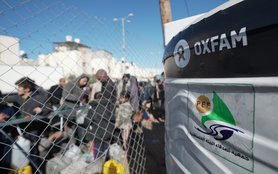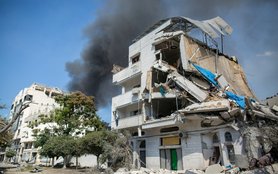Number killed directly by fighting is equivalent to eight more bus loads
More than 300 children have died in fighting across Yemen in the year since an airstrike hit a bus in Sa’ada killing 41 school children and almost 600 have been injured, as arms sales from the US and others continue to fuel the conflict.
335 children have been killed by violent attacks including airstrikes, mines and shelling since 9 August 2018, equivalent to another eight buses being hit. Many more have died from hunger and disease, according to the UN, in a massive humanitarian crisis stoked by the conflict.
Muhsin Siddiquey, Oxfam’s Yemen Country Director said: “The world was rightly appalled by an attack that took the lives of so many young, innocent schoolchildren. Yet almost one child a day has been killed in the year since and violence remains a daily threat for Yemenis, alongside the struggle against hunger and disease.
“The people of Yemen urgently need a nationwide ceasefire before more lives are lost to this horrific conflict and the humanitarian disaster that it is fueling. All parties to the conflict and those with influence over them should do all in their power to end this deadly war now.”
Since the latest figures were published, more children have been killed or injured. Just last week an attack on a market killed at least 10 civilians, including children, in Sa’ada while in Taizz, five children were injured by shelling.
Airstrikes and shelling in Al Dale’e in May killed 10 children. In March, five children were killed in clashes in Taizz city while an attack on the Kushar district of Hajjah governorate killed 14 children. Over the year, there have been thirty incidents involving schools and eighteen involving hospitals.
The conflict, between the Houthis and the internationally recognized government, backed by an international coalition that includes Saudi Arabia and the UAE, is now in its fifth year. The United Nations has estimated that if the war continues until 2022, more than half a million people will be killed by fighting, hunger and disease.
The Houthis and the internationally recognized government of Yemen reached an agreement at talks in December which included a ceasefire deal for the key port of Hudaydah but moves to implement it have been long delayed.
The government and the Saudi-led coalition have accused the Houthi forces of over 5000 violations of the Stockholm agreement, while the Houthis have in turn blamed the coalition and government forces for more than 27,000 violations.
The international community is coming under increasing pressure to stop selling arms to Saudi Arabia and other members of the coalition. In the United States, Congress has repeatedly taken bi-partisan action to end arms sales and other support that fuel this deadly conflict, but the Trump administration has prioritized their allies in the region over saving Yemeni lives. Oxfam and others have been pushing for an unconditional ban on arms sales to be included in the National Defense Authorization Act (NDAA) next month.
Siddiquey said: “Seventy years after the creation of the Geneva Conventions, which seek to protect civilians in and around war zones, children in Yemen still find themselves in the firing line. The international community should focus on protecting the lives of Yemeni civilians and ending this war, not profiting from it through arms sales.”


